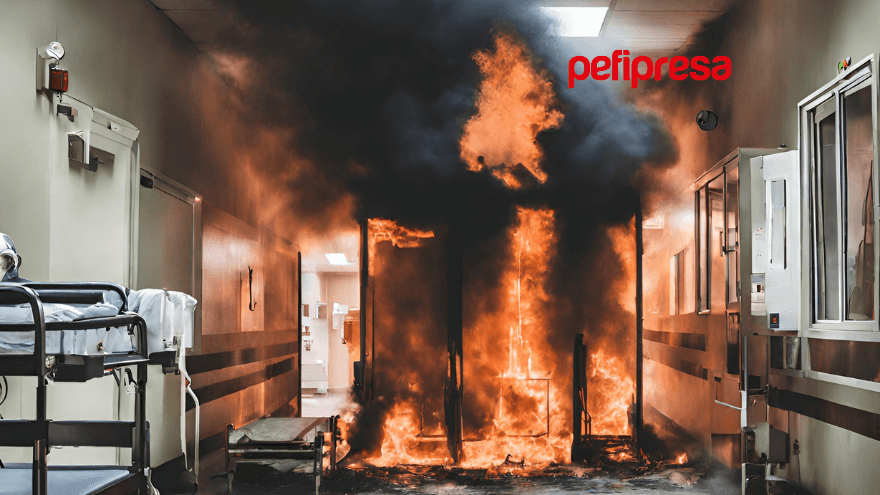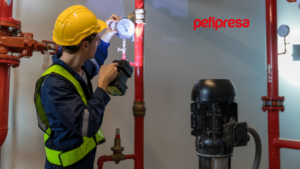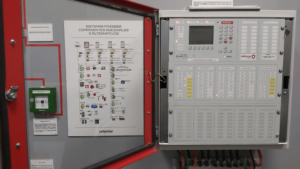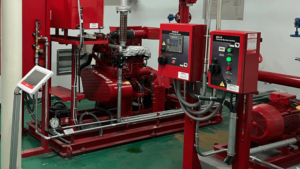Hospital fires pose a significant threat to life and property as these environments contain large numbers of people, many of whom may be incapacitated or have reduced mobility.
In addition, hospitals house valuable medical equipment and flammable materials that can contribute to the spread of a fire.
This article will explain the risks of fires in hospitals and the measures that can be taken to prevent and control them.
Fire risks in hospitals
Hospitals are complex environments that host a wide range of activities and services. Due to the nature of their function, hospitals also present a number of unique fire hazards that can impact the safety of patients, staff and visitors.
Electrical risks
Medical equipment
These infrastructures have a large amount of electronic medical equipment, such as monitors, dialysis machines, ventilators and medical imaging systems. This equipment may pose a fire hazard if not used, maintained or stored properly.
For example, a short circuit in medical equipment could cause a fire, especially if it is near flammable materials such as bedding, curtains, or medical supplies.
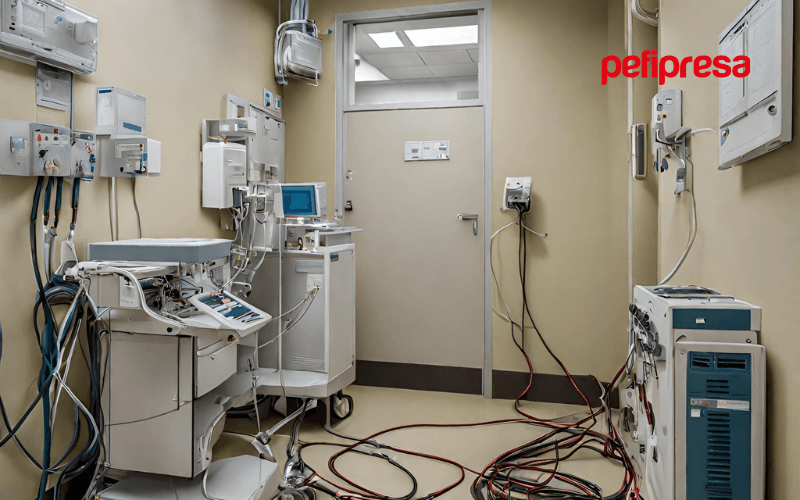
Electrical installations
Electrical installations in hospitals, such as distribution panels, sockets and cables, for example, can also pose fire risks if not properly maintained.
Damaged or frayed cables, loose connections, and overloaded plugs can cause sparks or overheating, which could result in a fire.
Chemical and gas risks
Anesthetic and medicinal gases
Hospitals use a variety of anesthetic and medicinal gases, such as oxygen, nitrous oxide, and helium.
These gases can be highly flammable or, in the case of oxygen, can intensify a fire.
If stored or handled incorrectly, these gases can cause fires or explosions.
Chemical products
A wide variety of chemicals are also stored and used in hospitals, such as disinfectants, cleaning solutions and pharmaceuticals. Some of these chemicals may be flammable or reactive, meaning they can burn or explode under certain conditions.
Improper storage or handling can increase the risk of fires in hospitals.
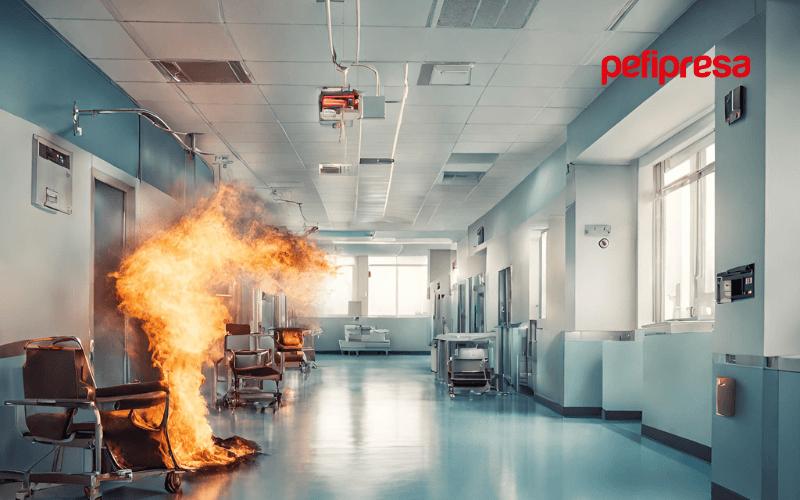
Risks associated with heating, ventilation and air conditioning
The accumulation of dust and dirt in air ducts can be flammable and, if ignited, can quickly spread a fire through the building.
Additionally, heating and air conditioning systems can overheat or leak fuel, which can also cause fires.
Risks in kitchen and food preparation areas
Kitchen and food preparation areas in hospitals can also be a source of fire hazards. Kitchens contain a variety of cooking equipment, such as stoves, ovens, and fryers, which can cause fires.
Additionally, grease buildup in exhaust hoods and ventilation systems can be flammable and, if ignited, can cause a fire that is difficult to control.
Risks in storage and supply areas
There are areas for storage of bedding, towels, medical supplies and cleaning products. If these materials are stored improperly, they may pose fire hazards. For example, storing flammable materials near ignition sources, such as electrical equipment or heating systems, can increase the risk of fire.
Hospitals present a number of unique fire risks due to the nature of their activities and services. It is essential that hospital administrators and staff are aware of these risks and take specific measures to prevent and control fires.
This includes ensuring the adequate maintenance of fire fighting equipment and facilities, the safe storage and handling of chemicals and gases, and the training of personnel in fire prevention and response. By proactively addressing these risks, hospitals can ensure a safe environment for patients, staff and visitors.
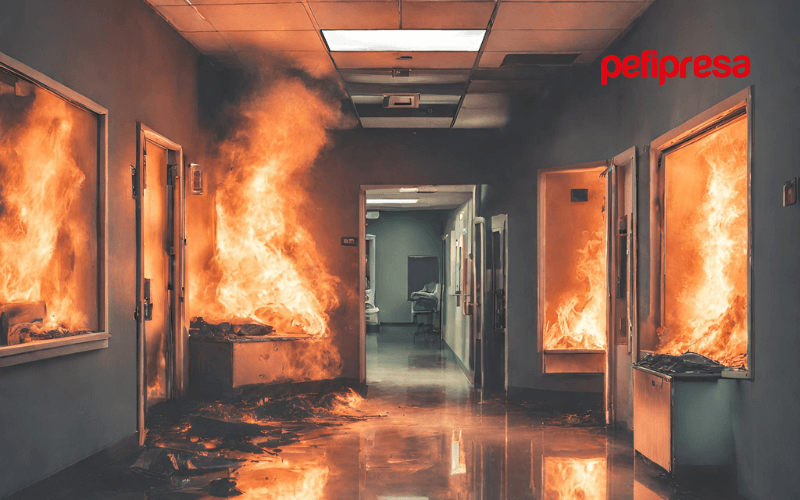
Measures to adopt to minimize fire risks in a hospital
Fire prevention
To reduce the risk of fires in hospitals it is essential to implement preventive measures. This includes the proper installation and maintenance of all facilities, as well as inspection of medical equipment and storage areas. It is also essential to ensure that flammable materials are stored properly and safely.
It is also essential that hospitals establish policies and procedures for the safe handling and disposal of chemicals and anesthetic gases. This may include training personnel in the proper use and storage of these materials, as well as implementing appropriate ventilation systems to reduce the buildup of flammable vapors.
Staff training
Hospital staff should receive regular training in fire prevention and management. This should include the identification of fire hazards, the proper use of fire extinguishers and other firefighting equipment, and the evacuation of patients and personnel in the event of an emergency.
Training should also address the importance of keeping escape routes clear of obstructions and the need to close doors to prevent the spread of fire and smoke.
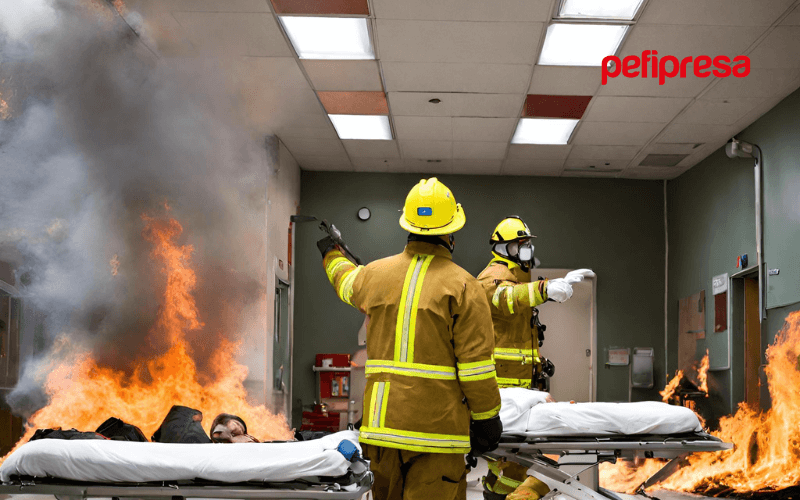
Fire detection systems in hospitals
Hospitals must be equipped with a complete fire protection system that covers everything from fire detection to fire extinguishing, tailored to the needs of this infrastructure. These systems must be maintained regularly to ensure proper functioning in the event of a fire.
Additionally, hospitals must have fire extinguishers and other firefighting equipment located in strategic areas throughout the building. Staff must be trained in the proper use of this equipment and there must be emergency plans in place to ensure a quick and effective response in the event of a fire.
To ensure the safety of patients, staff and visitors, it is essential to implement adequate fire protection systems.
Smoke and temperature detection systems
Smoke and temperature detectors are essential devices for early detection of fires in hospitals. These alarms can detect smoke or an unusual rise in temperature, indicating the presence of a fire.
When an alarm is activated, it emits an audible and/or visual signal to alert staff and building occupants. Excessive smoke and heat alarms should be installed in key areas of the hospital.
Manual alarm systems
Manual alarm systems, such as call points, allow hospital staff to activate a fire alarm manually if they detect a fire.
These devices should be located in easily accessible areas and clearly marked to ensure quick activation in the event of an emergency.
Fire extinguishing systems
Automatic sprinklers
Automatic sprinkler systems are one of the most effective ways to control and extinguish hospital fires. These systems are designed to detect a rise in temperature and automatically release water or another extinguishing agent to extinguish the fire.
Automatic sprinklers can be particularly useful in high-risk areas, such as kitchens, warehouses, and areas where flammable chemicals or gases are stored.
Portable fire extinguishers
Portable fire extinguishers are essential devices for fighting fires in hospitals. These devices allow hospital staff to quickly extinguish small fires before they spread and become uncontrollable.
Fire extinguishers should be located in strategic areas throughout the hospital and staff should be trained on how to use them correctly.
Gas fire extinguishing systems
Gas fire suppression systems are another option for protecting specific areas of a hospital, such as server rooms, laboratories, or medical gas storage areas.
These systems release an extinguishing gas, such as carbon dioxide or inert gas, to smother the fire by displacing oxygen in the affected area. Gas fire suppression systems are particularly useful in areas where the use of water or chemical agents could damage sensitive equipment or cause additional risks.
Smoke control and ventilation systems
Smoke control and ventilation systems are essential to limit the spread of smoke and maintain a safe environment in the event of a fire.
These systems may include smoke extraction fans, stair pressurization systems, and zoning smoke control systems. By controlling and extracting smoke, these systems help protect building occupants and facilitate evacuation and firefighting operations.
Training and emergency plans
In addition to the fire protection systems mentioned above, it is essential that certain hospital personnel receive regular training in fire prevention and response. This includes the identification of fire hazards, the proper use of fire extinguishers and other firefighting equipment, and the evacuation of patients and staff in the event of an emergency.
Hospitals must also have detailed emergency plans that describe the actions to be taken in the event of a fire. This includes evacuation procedures, assigning roles and responsibilities to personnel, and coordination with fire and other emergency services.
Hospital fire risks are a major concern and require a proactive approach to prevention and control.
The implementation of adequate fire protection systems is essential to ensure the safety of patients, staff and lives.

